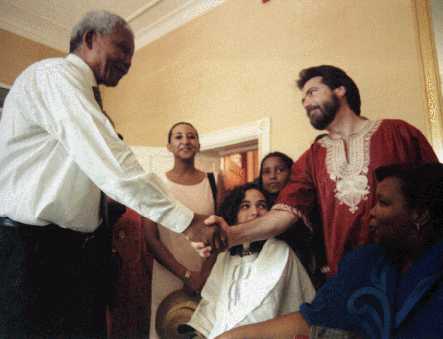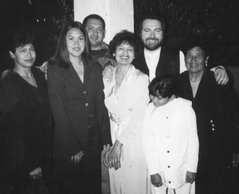 In 1658 a Slave Lodge was built next to the Dutch Fort in Cape Town and was named Corenhoop. It housed 98 slaves. Later this lodge was moved to be situated next to the VOC Plantation (the Company Gardens at the top of Adderley Street) and housed slaves until it became delapidated. It was rebuilt in 1669 but soon became too small for the VOC slave population. A fire, probably started by the slaves, raised the property in August 1679 and all the slaves from the lodge were moved into a new lodge which had been opened in July 1679 for the overflow slaves housed at the Castle of Good Hope. In 1713 this Slave Lodge was extended in length. In 1732 the building was again renovated. In 1751 it was again renovated and enlarged to house up to 1000 slaves. Only in 1803 were high up windows inserted on the exterior walls and ventilation openings on the interior walls around the courtyard.
In 1658 a Slave Lodge was built next to the Dutch Fort in Cape Town and was named Corenhoop. It housed 98 slaves. Later this lodge was moved to be situated next to the VOC Plantation (the Company Gardens at the top of Adderley Street) and housed slaves until it became delapidated. It was rebuilt in 1669 but soon became too small for the VOC slave population. A fire, probably started by the slaves, raised the property in August 1679 and all the slaves from the lodge were moved into a new lodge which had been opened in July 1679 for the overflow slaves housed at the Castle of Good Hope. In 1713 this Slave Lodge was extended in length. In 1732 the building was again renovated. In 1751 it was again renovated and enlarged to house up to 1000 slaves. Only in 1803 were high up windows inserted on the exterior walls and ventilation openings on the interior walls around the courtyard.The Slave Lodge housed men, women, children and infants, as well as the mentally insane of the Colony. During one period alone (1702 - 1713) in epidemics such as the time of smallpox, over 500 slaves died. The death rate at the Slave Lodge was 20 - 30%. The average population of the Slave Lodge was 476. The suicide rate was 15 - 20 per year. Over the entire period 4 213 slaves were born in the lodge alone. In 1807 there were 283 slaves remaining in the Slave Lodge and in 1811 all slaves were permanently moved out of the Slave Lodge which was then renovated and adapted as government offices and used as the first Parliament. Some of the slaves were offered to respected citizens and military officers and the remaining last slaves were moved to a rented building. In 1820 there were 135 remaining slaves who moved into a new lodge at the top of the Company Gardens (where UCT Orange Street Campus now stands) and in 1828. six years before the universal emancipation of slaves, these slaves were manumitted en bloc.

Today the Slave Lodge is part of Iziko Museums and serves as a museum on 'Slavery in the Cape'. It also serves as a one of a number of places of memory dotted across the Western Cape where we are able to visit and remember this part of our heritage.
For more information on the Slave Lodge Museum visit the following Website: www.iziko.org.za




No comments:
Post a Comment